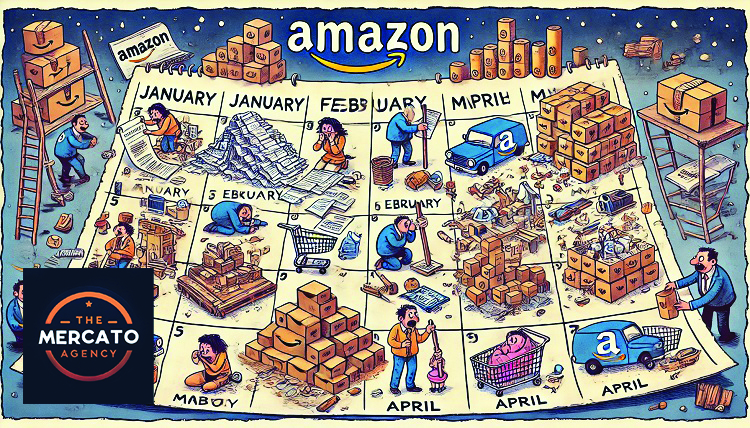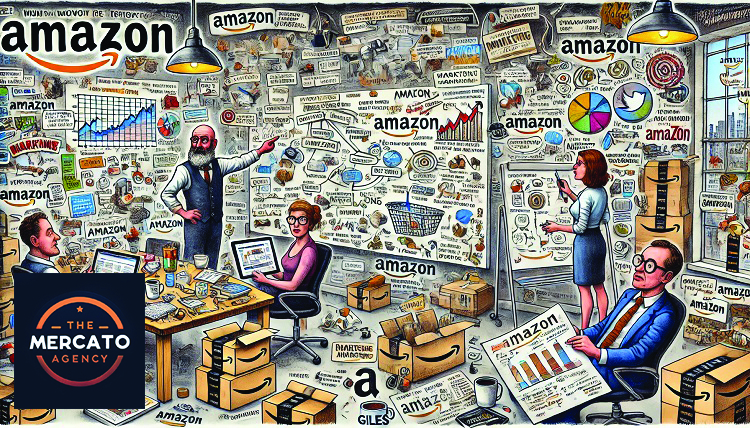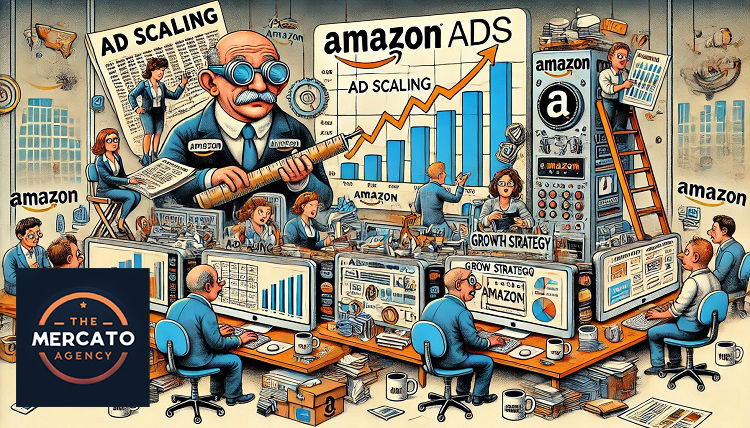Amazon Pay Per Click Advertising – What Determines the Cost of Amazon PPC?
Amazon Pay-Per-Click (PPC) advertising is a powerful tool for sellers and vendors to promote their products on Amazon. It works on a bidding system where advertisers bid on keywords to have their ads appear in relevant search results and product detail pages. Here’s a comprehensive overview of what Amazon PPC is, how it works, and what you need to know about its costs.
What is Amazon PPC?
Amazon PPC is an advertising model where you pay only when a potential customer clicks on your ad. This type of advertising allows sellers to increase their product visibility, drive traffic to their listings, and ultimately boost sales. Amazon PPC campaigns are a crucial part of many sellers’ marketing strategies, helping to improve product rankings and discoverability on the platform.
Types of Amazon PPC Ads
Sponsored Products:
- These are the most common type of PPC ads on Amazon. They appear in search results and on product detail pages. Sponsored Products ads are targeted using keywords or product targeting and are designed to promote individual product listings.
Sponsored Brands:
- These ads showcase your brand and a collection of your products. They appear in search results and feature your brand logo, a custom headline, and multiple products. Sponsored Brands are ideal for increasing brand awareness and driving sales across your product portfolio.
Sponsored Display:
- These ads appear both on and off Amazon. They target shoppers based on their interests and shopping behaviors. Sponsored Display ads help to reach a broader audience and can be used to retarget shoppers who have viewed your products or similar products.
How Does Amazon PPC Work?
Amazon PPC operates on a bidding system where you compete with other advertisers for ad placements. Here’s a step-by-step breakdown of how it works:
Set Up a Campaign:
- You start by creating a PPC campaign in the Amazon Advertising console. You’ll need to choose your campaign type, set a daily budget, and define the duration of the campaign.
Keyword Selection:
- For Sponsored Products and Sponsored Brands, you select keywords that are relevant to your products. These keywords trigger your ads when shoppers search for those terms. You can use broad match, phrase match, or exact match to control how closely the search terms need to match your keywords.
Bid Setting:
- You set a maximum bid for each keyword. This is the highest amount you’re willing to pay for a click on your ad. Amazon uses a second-price auction model, meaning you only pay one cent more than the next highest bid.
Ad Placement:
- Amazon determines ad placement based on the relevance and bid amount. High bids and highly relevant ads are more likely to appear in prominent positions.
Performance Monitoring:
- Once your campaign is live, you monitor its performance through metrics like impressions, clicks, click-through rate (CTR), cost-per-click (CPC), and conversions. This data helps you optimize your campaigns for better results.
What Determines the Cost of Amazon PPC?
The cost of Amazon PPC can vary widely and is influenced by several factors:
Cost-Per-Click (CPC):
- This is the amount you pay each time someone clicks on your ad. CPC rates can range from a few cents to several dollars, depending on the competition for the chosen keywords.
Daily Budget:
- This is the maximum amount you’re willing to spend each day on your PPC campaigns. Your daily budget helps control your overall advertising spend.
Campaign Type:
- Different campaign types (Sponsored Products, Sponsored Brands, Sponsored Display) may have different CPC rates and budget requirements.
Bid Amount:
- Your bid amount influences your ad placement. Higher bids can improve your chances of winning ad placements but also increase your costs.
Ad Relevance and Quality:
- Amazon considers the relevance and quality of your ad when determining ad placement. Well-optimized, relevant ads may achieve better placement at a lower cost.
Keyword Strategy:
- The competitiveness of your chosen keywords significantly impacts your CPC. High-competition keywords tend to have higher CPCs.
Example Cost Calculation
Let’s say you set a daily budget of £50 with an average CPC of £1.25. Here’s a simple breakdown of what you might expect:
- Daily Clicks: With a £50 daily budget and a £1.25 CPC, you can get approximately 40 clicks per day.
- Monthly Cost Estimate: £50 (daily budget) x 30 (days) = £1,500
Additional Costs
- Ad Management Tools: If you use third-party tools or services to manage your Amazon PPC campaigns, this can add to your overall costs.
Cost Control Tips
- Set a Realistic Daily Budget: Start with a modest budget and adjust based on performance.
- Monitor and Adjust Bids: Regularly review and optimize your bids to balance cost and ad placement.
- Optimize Keywords: Focus on relevant keywords with a good balance of competition and search volume.
- Track ROI: Continuously monitor your ad performance and adjust your strategy to ensure you’re achieving a good return on investment.
In conclusion, Amazon PPC is a dynamic and essential component of your marketing strategy on Amazon. While costs can vary, understanding how to manage and optimize your PPC campaigns can help you effectively control your budget and maximize your advertising impact.
If you feel that The Mercato Agency might be the agency to manage your Amazon PPC Advertising strategy, please use the contact us form below.






